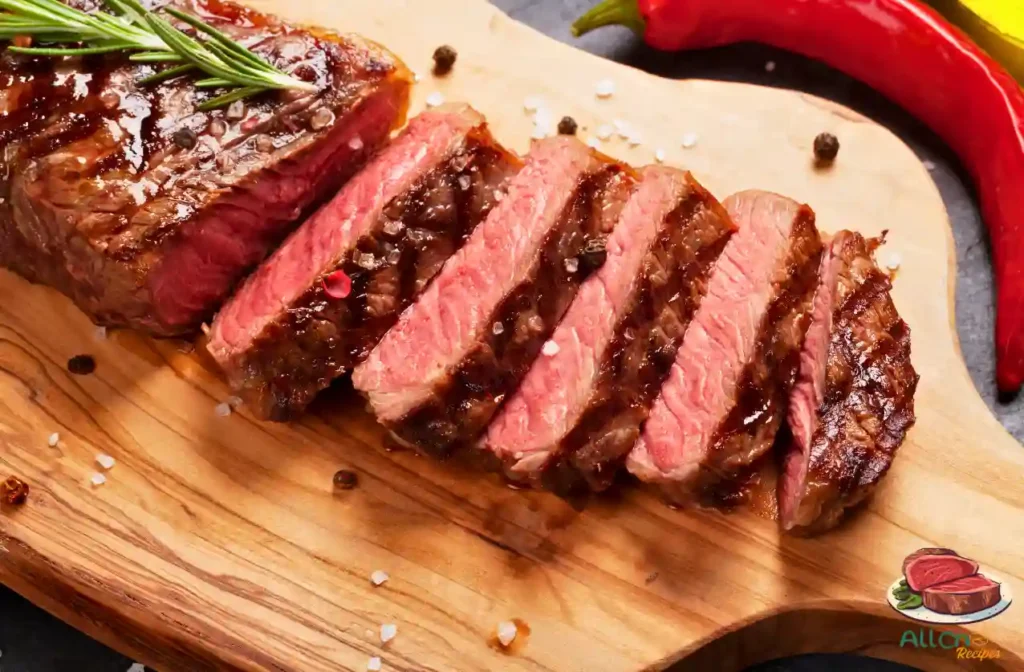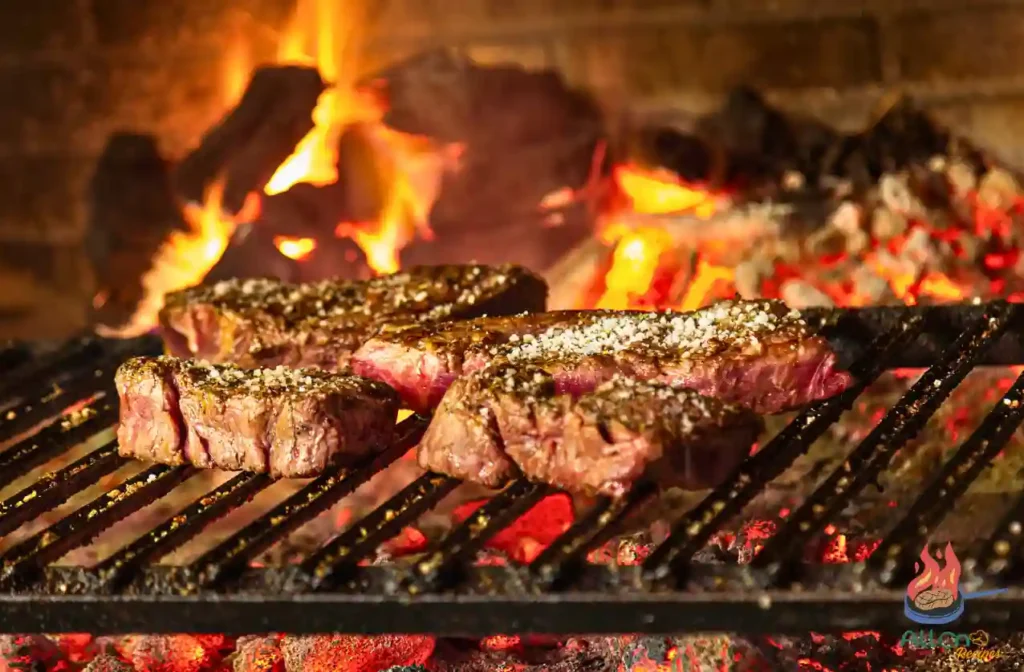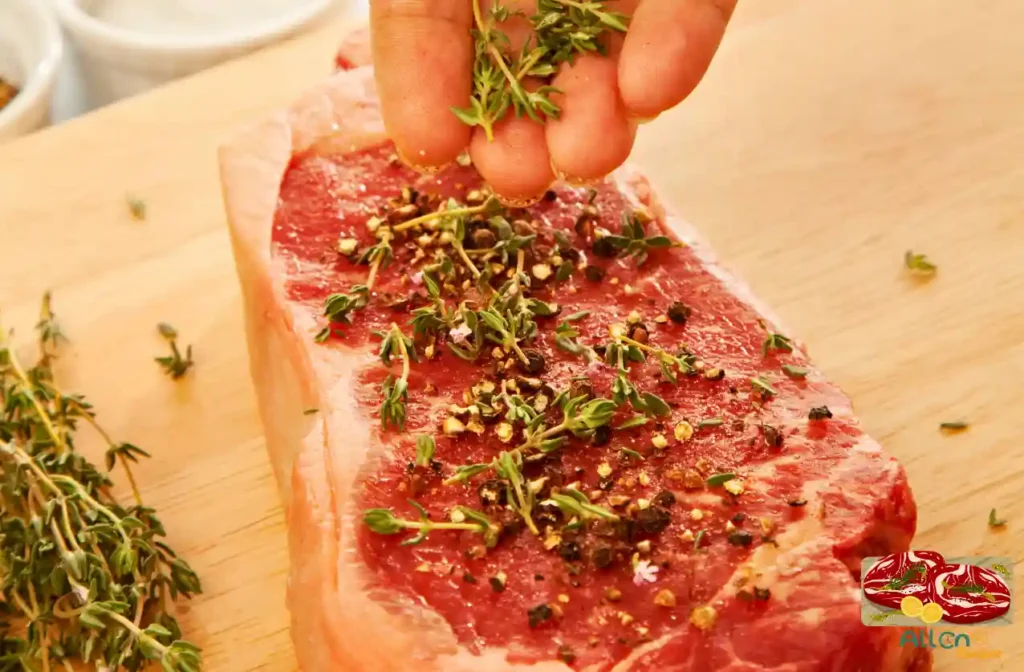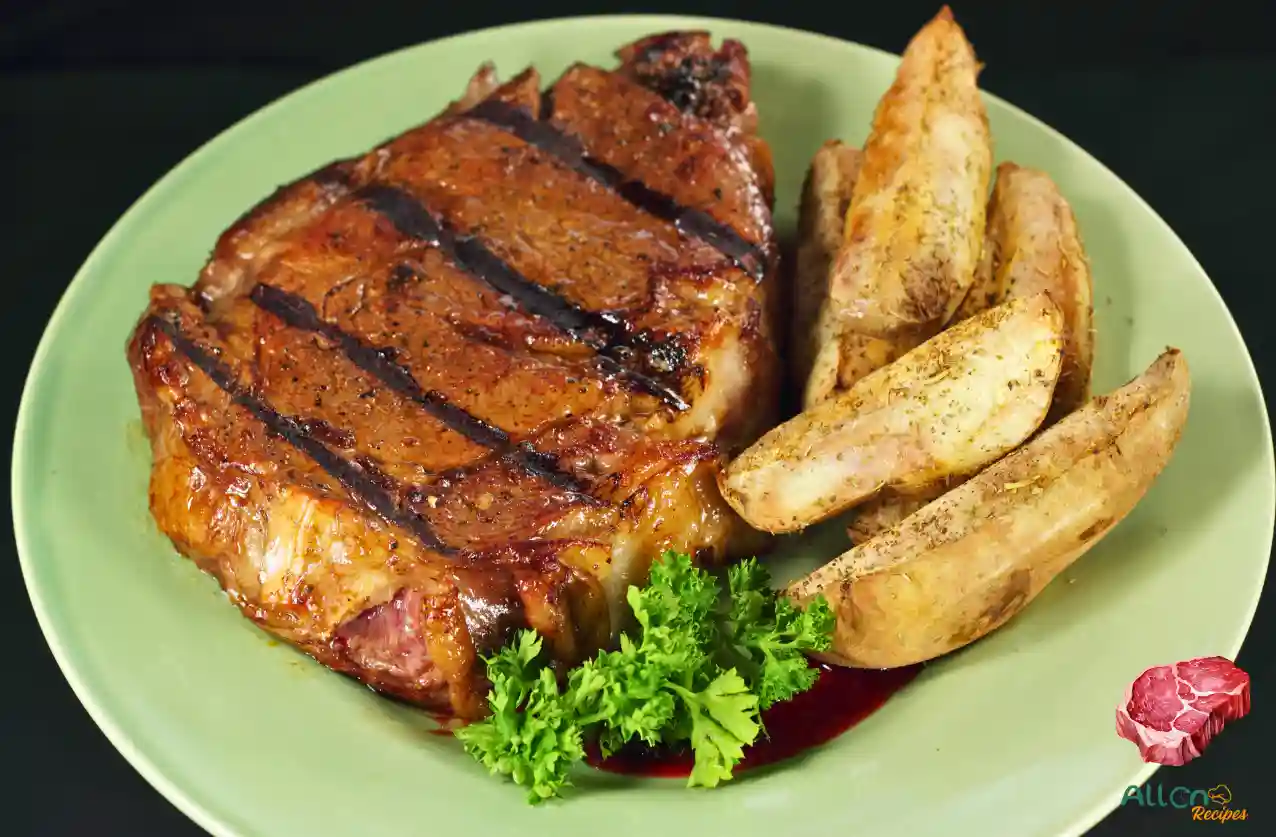From Cut to Plate, This Is How You Do It Right
You want a steak that turns heads, thick, rich, unapologetic. The kind that makes you stop mid-bite and go, “Okay, this is something else.” That’s what a Delmonico should be.
Now, the tricky part? A lot of people throw the name around without really knowing what it is. Some think it’s a ribeye. Others say it’s a strip. Some butcher counters label anything thick as Delmonico and hope you won’t ask questions.
So let’s sort that out first.
Curious where to track down the real thing? Read Where to Get a Good Delmonico (Without Getting Ripped Off)
What Even Is a Delmonico?
Short answer: it depends. There’s no one official cut of meat called “Delmonico.”
Originally, it came out of Delmonico’s Restaurant in 19th-century New York, thick steak, pan-seared, butter-basted, meant to impress. Over time, the term became more about style and experience than a single cut.
Depending on where you shop, a Delmonico might be:
- A boneless ribeye
- A heavily marbled chuck eye
- A strip steak cut thick and bold
What matters isn’t the exact location on the cow, it’s the marbling, thickness, and intention. A Delmonico is a statement cut. Not something you grab as an afterthought.
If it’s thin, lean, or trimmed to death? That’s not a Delmonico. That’s just meat.
Choosing the Right Cut

You walk up to the counter, see a dozen steaks in the case, and maybe one’s labeled “Delmonico.” But labels mean nothing if the cut isn’t right.
You’re looking for substance. A Delmonico should be thick, heavily marbled, and have a presence. You pick it up and it feels like a meal, not just meat.
Here’s what to actually look for:
- Thickness: Minimum 1.5 inches. Two is better. If it’s thin, skip it.
- Marbling: You want those fine white lines running through the meat. Fat is flavor.
- Even shape: Avoid tapering ends or uneven thickness, they cook unevenly.
- Color: Deep red, slightly glossy. Not dull. Not gray.
- Fat cap: A little is good. Helps during cooking. Too much is just waste.
If the meat guy doesn’t know where it came from or can’t tell you the grade, move on. This cut deserves better.
And remember, where you buy it matters. Grocery stores are hit or miss. Sometimes fine, sometimes flat. Butchers? Farmers’ markets? Online meat guys who care about sourcing? That’s where the real ones are.
Here’s a quick breakdown of the ideal thickness and fat content to look for when shopping.
Prep Matters More Than You Think
Most people mess up a steak before it even hits the heat.
It’s not about being fancy. It’s about setting the steak up to win, so when it sears, it sears hard. When it rests, it rests juicy. And when you slice into it? There’s no guesswork, just grin-worthy results.
That’s why tempering matters before cooking
Here’s how I handle prep, every single time:
- Let it come up to temp
Straight from the fridge to the pan? Nope. That’s how you get a cold center and overcooked edges. Let the steak sit out for 30 to 45 minutes first. - Pat it bone dry
Moisture on the surface = steam. Steam ruins crust. Grab some paper towels and get that thing dry before seasoning. - Season like you mean it
Don’t be shy. Thick steak needs bold salt. I use kosher salt, lots of it, plus coarse black pepper. Nothing else, unless I’m doing a rub. No oil, it doesn’t help here. - (Optional but excellent) Dry brine it
Got time? Salt it and leave it uncovered in the fridge overnight. The salt pulls moisture to the surface, then draws it back in, seasoning the meat deeply. The result? Better texture, deeper flavor, epic crust.
This part takes 10 minutes, maybe. But it changes everything about the final bite.
Try three steak marinades that actually work without turning the meat mushy.
Cooking Methods Compared

(There’s More Than One Right Way, If You Do It Right)
There’s no one “correct” way to cook a Delmonico, just ways that work for your setup and how you like your steak to turn out.
Some people swear by cast iron. Others only grill. Some go low and slow with a reverse sear. I’ve done them all. They all work, if you respect the process.
1. Pan-Seared
Best when: You want a fast, full-flavored crust and don’t feel like firing up the grill.
Use: Cast iron. Preheated. Smoking hot.
Finish: Optional oven or baste with butter, garlic, and herbs.
Killer crust, finished with butter. Pan-Seared Delmonico Steak with Garlic Herb Butter
2. Grilled (Direct & Indirect)
Best when: You want that char, smoke, and grill flavor.
Use: Charcoal or gas with a two-zone setup, sear over flame, finish off heat.
Watch for: Flare-ups. Fat renders fast and can torch your crust if you’re not careful.
Smoky heat and a bold rub. Grilled Delmonico Steak with a Tex-Mex Rub That Works
3. Reverse Sear (Low & Slow)
Best when: You’ve got time and want perfect doneness edge-to-edge.
Use: Oven or smoker at 250°F, then sear in a hot pan or grill.
Why it’s magic: You build internal temp slowly, then finish with crust. Almost impossible to screw up.
Gentle oven or sous-vide, then a blazing sear. Reverse Sear Delmonico Steak (Low & Slow)
4. Sous Vide (If You’re Into That)
I’ll say this, it’s precise. You set the temp, walk away, and sear at the end. But for me? It’s too clean. Too… perfect. Great for control, not for soul.
Seasoning & Marinades

(Simple Works, But So Does Flavor Play)
A good Delmonico barely needs anything. Salt, pepper, heat, done. But that doesn’t mean you can’t mess with flavors if the mood hits. I don’t always marinate or rub, but when I do, it’s intentional. No dumping bottled sauce and hoping for the best.
Straight Seasoning
For most cooks, this is all you need:
- Kosher salt, coarse enough to cling, clean enough to season deep
- Fresh cracked black pepper, don’t skimp
- (Optional) garlic powder, smoked paprika, or a tiny bit of crushed rosemary
Apply it generously. This steak can take it. And season all sides, including edges. They deserve flavor too.
Dry Rubs
Rub it in like you mean it. Great for grilling or when you want the crust to carry the flavor. Think paprika, chili powder, cumin, bold stuff.
Marinades
I don’t marinate Delmonico often, but when I do, it’s for a purpose. You want flavor, not mush.
Key rules:
- Don’t go too acidic, it’ll break down the meat
- 2 to 4 hours tops, unless it’s really mild
- Always dry it off before cooking or you’ll lose your crust
Steak Doneness & Temp Guide
(Because Guessing Isn’t Good Enough)
Here’s where people mess it up the most, not the sear, not the seasoning. It’s the doneness. They either pull it too early or let it ride too long, thinking, “Looks good to me.” Then they slice in… and it’s gray.
Use a thermometer. I don’t care how experienced you are, temp doesn’t lie.
Here’s the breakdown:
| Doneness | Pull Temp | Final Temp | Notes |
| Rare | 115°F | 120°F | Cool red center, soft to the touch |
| Medium-Rare | 120–125°F | 130°F | Warm red center, tender, sweet spot for Delmonico |
| Medium | 130°F | 135°F | Warm pink center, firming up |
| Medium-Well | 140°F | 145°F | Light pink, losing moisture |
| Well-Done | 150°F+ | Don’t. | Seriously. Don’t. You’ll lose everything that makes this steak good. |
Full guide here: Steak Doneness Explained: Temps, Resting, and More
Also:
- Always rest your steak, 5 to 10 minutes minimum.
- Carryover heat matters. Pull early. Let it finish off heat.
- Slice against the grain, or all your effort goes to waste.
Sides, Sauces & Serving Ideas
(Keep It Simple, Let the Steak Lead)
A Delmonico doesn’t need much on the side. But the right pairing makes it even better. I’m not talking about 12-ingredient reductions or fussy plating, just good, balanced support that lets the steak shine.
Go-To Sides
Starches:
- Roasted baby potatoes
- Garlic mashed
- Grilled sourdough or thick toast for soaking up juices
Veg:
- Charred asparagus
- Seared broccolini with lemon
- Brussels sprouts roasted dark and crispy
Salads:
- Arugula + lemon vinaigrette
- Tomato + red onion + balsamic
- Simple greens, just enough to cut the richness
Butter, Not Sauce
Compound butter beats sauce every time here. It melts, it mingles, it doesn’t hide the crust, it enhances it.
Try:
- Garlic + herb
- Blue cheese + black pepper
- Smoked paprika + shallot
If you’re dying for sauce, keep it light. A little chimichurri. Maybe a red wine pan sauce if you’ve got drippings. But honestly? The steak does the talking.
Final Tips & Troubleshooting
(Because Even Good Cooks Screw Up Sometimes)
No matter how many steaks you’ve cooked, one wrong move can wreck a great cut. Here’s the stuff I’ve learned by messing it up so you don’t have to.
Common Mistakes, and How to Dodge Them
Too Cold Going In?
→ Steak cooks unevenly. Always let it warm up.
Pan Not Hot Enough?
→ You get a gray, limp crust. Cast iron needs to smoke first. Be patient.
Didn’t Dry the Surface?
→ Steam, not sear. Paper towel that thing until it feels tacky.
Over-Marinated?
→ You’ll lose texture and crust. 2–4 hours max, unless the mix is super mild.
Sliced Wrong?
→ A perfect steak can feel tough if you slice with the grain. Always cut across.
No Thermometer?
→ Guesswork = disappointment. Use one. Pull early. Let it rest.
Bonus: What To Do With Leftovers
- Slice it cold for steak sandwiches
- Chop it up and toss into eggs or tacos
- Reheat gently in foil with butter, don’t microwave it into rubber
That’s a Wrap
Delmonico isn’t a fancy steak, it’s a bold steak. Big on flavor, rich in fat, built for crust and contrast.
You don’t need to overthink it. You just need to respect it.
Start with a great cut, prep it right, pick the method that fits your style, and don’t rush the finish.
Let the steak do the talking, you just set the stage.
Want the truth? Read The Prime Delmonico Ribeye Is It Really a Thing?
